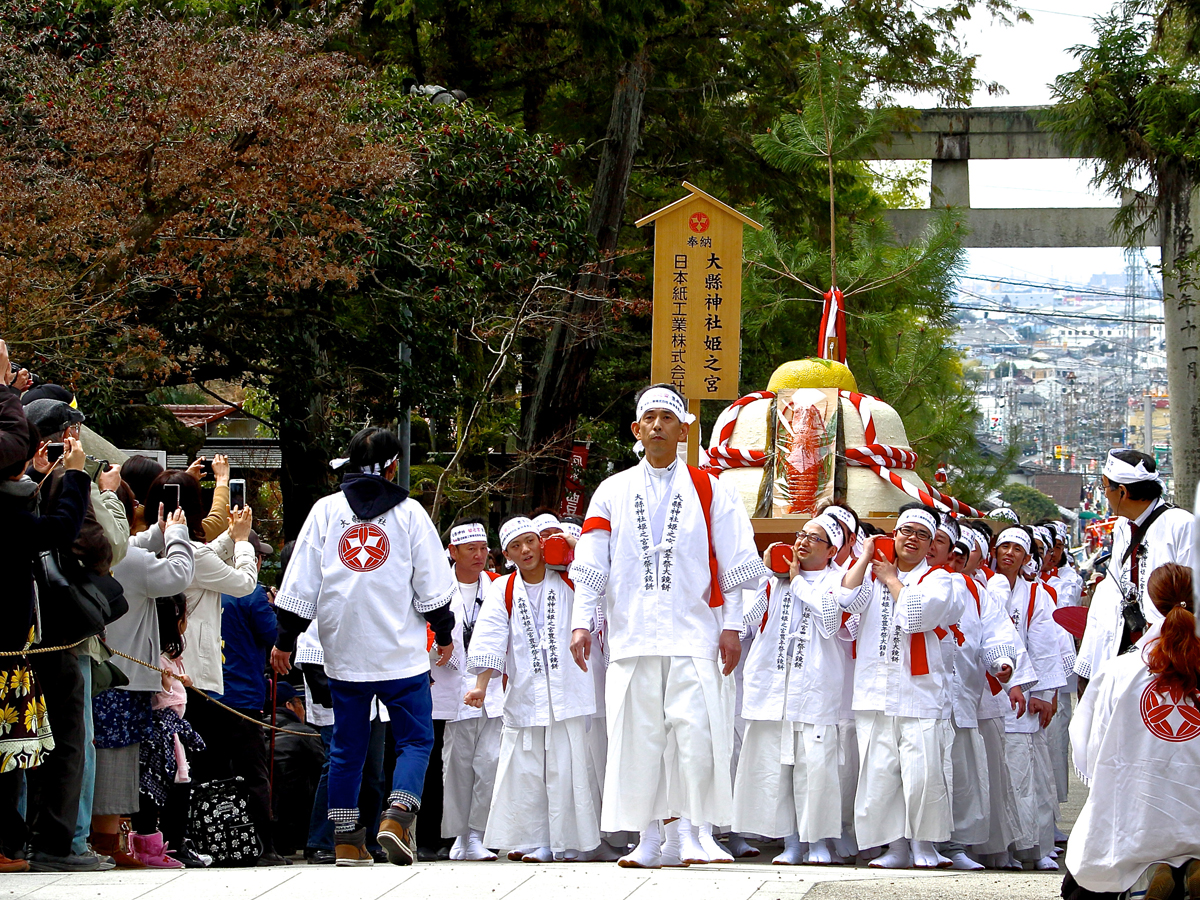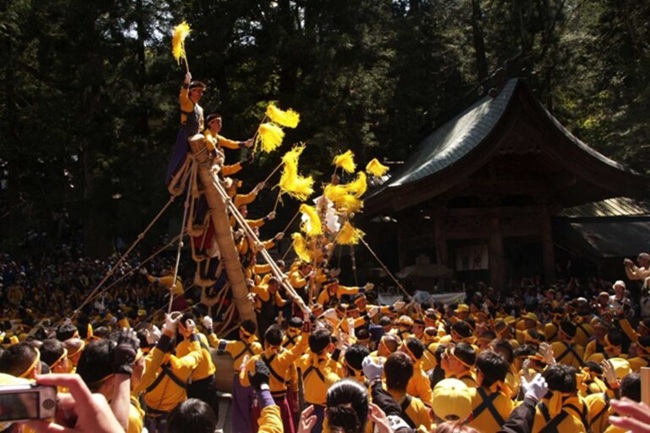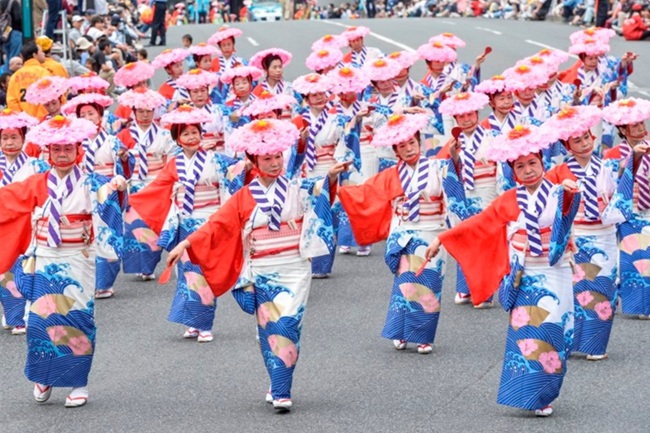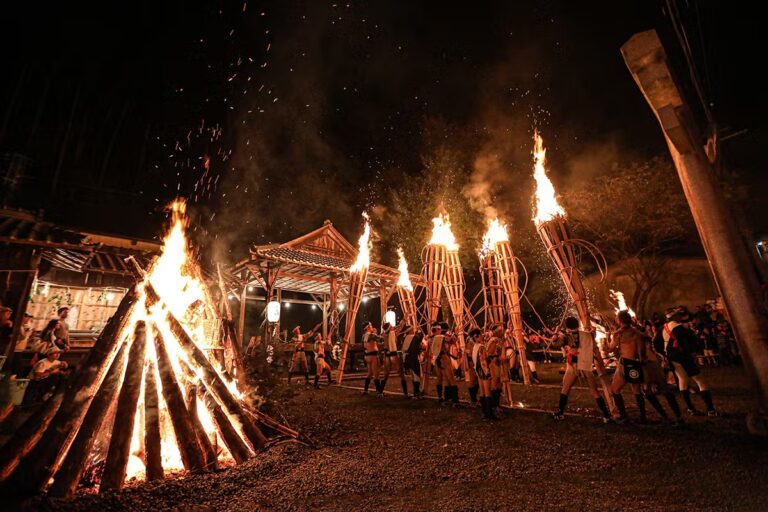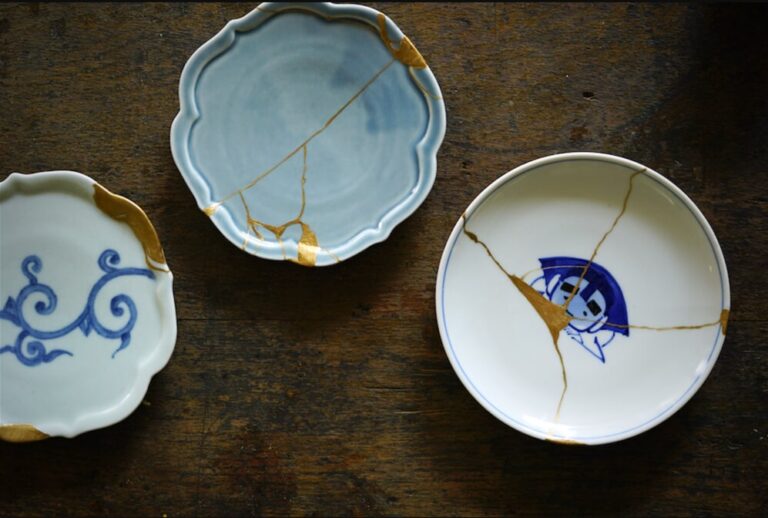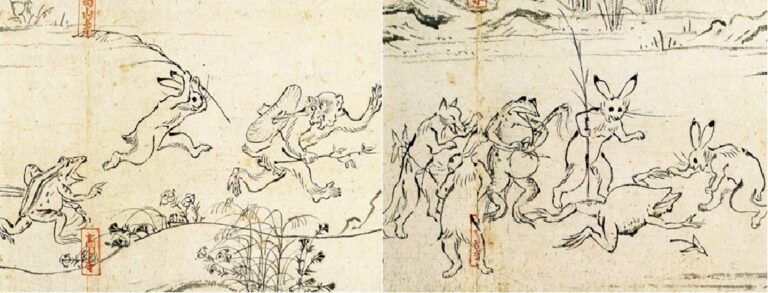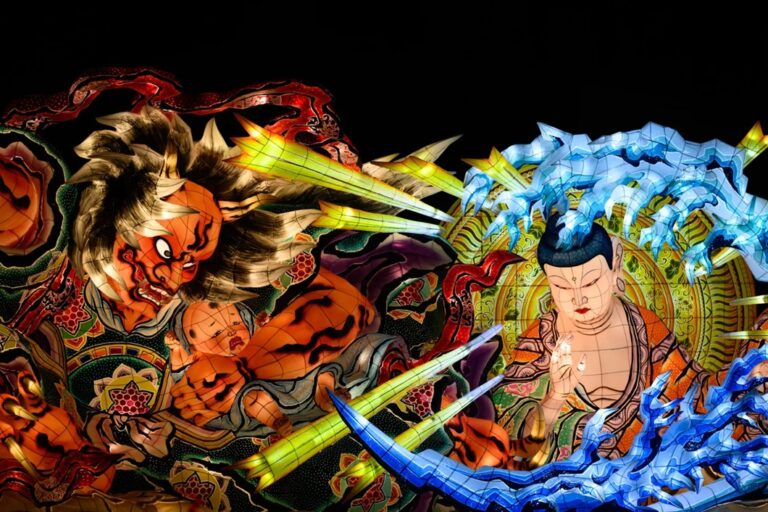Tagata Shrine Hōnen Festival — The World’s Unique Festival and Prayers for Fertility
Held every year on March 15 at Tagata Shrine in Komaki City, Aichi Prefecture, the “Hōnen Festival” is known as a unique festival where a giant male symbol is carried. Praying for good harvests and prosperity of descendants, this festival gathers many worshippers from inside and outside Japan, and is a spring event filled with smiles.
Origin and Belief of the Festival
The Hōnen Festival has its origin in “Ta-asobi,” a traditional event praying for agricultural fertility. Originally, it was held on the full moon of the lunar New Year’s January 15 (Koshōgatsu), where people offered performances imitating the union of man and woman to the gods, praying for rich harvests. After World War II, with the tourism development, the form changed into carrying a giant wooden phallus (Ō-owasegata).
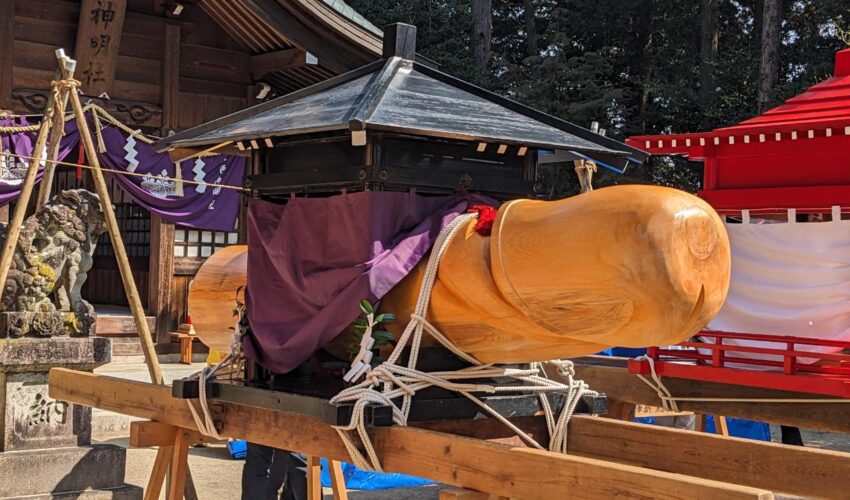
Highlights of the Mikoshi Procession
The central feature of the festival is the “Mikoshi Procession.” Mikoshi (portable shrine) is a sacred palanquin in which the deity is believed to temporarily reside, and it is indispensable for Japanese festivals.
At the head of the procession walks “Sarutahiko,” the guiding deity. Sarutahiko appears in Japanese mythology and is regarded as the god who leads people in the right direction, playing the role of a guide in rituals. Behind follow a great banner (Ōnobori) painted with male organs, and women carrying small phallic offerings.
Next, the “Hōren” carries the image of the enshrined deity Mitoshi-no-Kami, and the “Gozen Mikoshi” carries the image of Takeinadane-no-Mikoto, husband of Tamahime-no-Mikoto. Finally, the highlight, the “Yōbutsu Mikoshi,” carries a huge wooden phallus, about 2 meters long and 60 cm in diameter, arousing laughter and excitement among the spectators.

When the “Ōsakaki” (great sacred tree branch) arrives at the shrine grounds, worshippers scramble for its leaves. It is believed that placing them at home brings good fortune. At the end, “Mochimaki” (rice cake scattering) takes place, where about 5,000 rice cakes are thrown, and the festival reaches its climax. Mochimaki is a Japanese traditional ritual in which rice cakes are thrown from the shrine, and worshippers receive them to share the blessings.

Contrast of Yin and Yang
The Hōnen Festival of Tagata Shrine is called the “Festival of Yang.” On the other hand, at Hime-no-Miya (a subsidiary shrine of Ōagata Shrine) in Inuyama City, a festival is held carrying portable shrines with symbols of women, which is called the “Festival of Yin.” As the dates are close, they are often confused, but originally they are separate rituals. It is an example showing the Japanese worldview of yin and yang existing as a pair.
Enshrined Deities and History
Tagata Shrine enshrines two deities called “Gosaijin.” Mitoshi-no-Kami is a god of agriculture and guardian of good harvests. Tamahime-no-Mikoto devoted herself to the development of the Owari region and is regarded as a goddess symbolizing children and safe delivery. In Shinto, the deities enshrined at a shrine are called “Gosaijin,” and people worship them to receive their divine protection.
The shrine is very old; its name appears in the “Engishiki” compiled in 927, showing its long and honorable history.
Tagata Shrine Hōnen Festival Information
・Date: March 15 every year
・Time: 10:00–16:00
・Venue: Tagata Shrine (152 Tagata-cho, Komaki City, Aichi Prefecture)
If You Miss Hōnen Festival
As the festival is fixed on March 15, you will have to wait until the next year. However, Tagata Shrine is open for worship throughout the year, and it is widely known as a shrine for prayers of safe delivery and fertility.
Which festival will you go to next?

Editor and writer from Japan. Not the best at English, but I share real stories with heart and honesty — aiming to connect cultures and ideas that matter.

